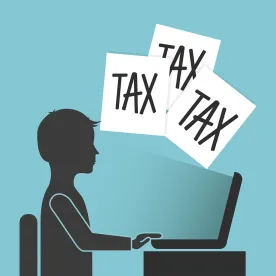In the spirit of the holidays, the Internal Revenue Service gave a gift to sponsors of onacatax-deferred annuity plans on December 4, 2018, by issuing IRS Notice 2018-95. For plan sponsors that exclude part-time employees from their 403(b) plans, this gift provides a 10-year nod on their historical plan administration, despite noncompliance with the once-in-always-in part-time exclusion condition.
The Notice contains many conditions to qualify for the relief. It also does not provide blanket relief covering all potential administrative issues involving the exclusion of part-time workers. So, just as important as the relief itself is what the relief does not cover, serving as an important reminder to plan sponsors about the circumstances in which part-time employees may be excluded from 403(b) plans.
The 403(b) Plan Universal Availability Requirement
One of the tax-law based nondiscrimination requirements applicable to 403(b) plans is the “universal availability” requirement. This requirement means what is says – generally, if any employee is allowed to make elective deferrals into the plan, every employee must be permitted to do so. The plan must be universally available.
There are some important exceptions to this requirement, one of which relates to part-time employees. Your Section 403(b) plan can exclude part-time employees from participating.
Importantly, this exclusion of part-time workers must be in your written plan document. You cannot simply exclude part-time employees or classes of employees who typically work part-time hours operationally, taking the position only full-time employees are eligible. This is a legal compliance issue requiring correction and to which IRS relief is not available.
Who Qualifies as a Part-Time Employee?
Like most employee benefit rules, there is a technical legal meaning to the term “part-time.” This definition may not jive with your employment practices, and it is not the opposite of “full-time” as under the Affordable Care Act (“ACA”). So, this tends to be an area ripe for legal compliance issues.
Under the Section 403(b) regulations, an individual is part-time if:
- Looking forward from their first date of hire, you do not expect them to work at least 1,000 hours during their first year of employment (the “first-year exclusion”); and
- Looking backward for each year ending after the initial year, the employee did not actually work 1,000 hours (the “look back exclusion”). The plan can use either anniversary dates or the plan year when applying these rules.
These concepts are similar to the ACA measurement methods involving variable hour employees. However, it should be noted, they use the retirement plan 1,000 hours of service requirement, in lieu of the 30- hour requirement used for group medical plans.
The Once-In-Always-In Condition
Simply applying the above rules for excluding part-time employees is not enough to meet the universal availability requirements. Instead, there is a third requirement — the once-in-always-in condition, which says: Once an employee meets the 1,000-hour requirement, that employee no longer can be excluded from the 403(b) plan based on being a part-time employee.
For example, say you hire Joe Blow in June of 2016, expecting Joe to work 750 hours per year. But, Joe actually works 1040 hours during his first year of employment and 750 hours every plan year after that. The ONLY year for which you would be permitted to exclude Joe from your plan is Joe’s first year when you reasonably expected him to work under 1,000 hours. Because Joe actually worked 1,040 hours during that first year, Joe can no longer be excluded from the plan based on being a part-time employee for succeeding years. This is true even though Joe never again works 1,000 hours.
Note how different this rule is from the ACA regulations, which enable employers to apply the look-back rules during measurement periods on a year-by-year basis, resulting in employees coming in and out of group medical plans during their periods of employment.
Many employers have administered their 403(b) plans like their group medical plans where part-time employees come in and out of eligibility based on the number of hours they worked during the prior year. So in the case of Joe Blow, many employers would have let Joe into the 403(b) plan based on his actually working 1,040 hours during his first 12-months of employment. Yet after that first plan year of participation, they would have excluded Joe from the 403(b) plan by virtue of his working only 750 hours per year. This is not allowed by the once-in-always-in condition and is what the IRS relief specifically addresses.
Operational Relief from the Once-In-Always-In Condition
During the relief period (defined below), the IRS has said that a plan will not be treated as failing to satisfy the requirements for the part-time employee exclusion simply because the plan did not apply the once-in-always-in condition. Stated differently, the relief applies only if:
- The plan contains an express exclusion of part-time employees;
- The plan administrator applied the first year exclusion rule correctly;
- The plan administrator applied the look back exclusion rule correctly for subsequent plan years;
- No employees working part-time hours received different or special treatment (such as allowing an executive’s child working 10 hours per week to participate in the 403(b) plan when others working similar hours are excluded); and
- The only mistake is that the plan had part-time employees coming in and out of participation based on the number of hours they worked each year.
Section 403(b) plans that are individually designed also must be amended on or before March 31, 2020, to reflect that the once-in-always-in condition was not applied. Comparatively, pre-approved Section 403(b) plans, such as those that use an Adoption Agreement platform, are not required to be amended as a condition of this relief.
Take the example above where Joe Blow was hired in June of 2016 with the expectation of his working 750 hours per year. But Joe Blow actually worked 1040 hours during his first year of employment and 750 hours every year after that. If the employer allowed Joe Blow to participate after he actually worked 1040 hours, but then excluded Joe thereafter based on his working 750 hours per year (in violation of the once-in-always-in condition), then the plan should qualify for the operational relief described in the IRS Notice, assuming the plan is amended, as needed.
Relief Period
The relief period begins with tax years beginning after December 31, 2008, (January 1, 2009, for calendar year plans). This is the general effective date for the Section 403(b) regulations, which set forth the once-in-always-in requirements. The relief period ends on one of two dates:
- For plans that use a plan year basis of measurement, the last day of the last exclusion year that ends before December 31, 2019, (December 31, 2018, for calendar year plans);
- For plans that use an anniversary date basis of measurement, the last day of the employee’s last exclusion year that ends before December 31, 2019, (e.g., July 19, 2019, for an employee hired on July 20, 2015).
Fresh Start Opportunity
The IRS Notice also contains a special rule, allowing plans essentially to start over and have a fresh start on the administration of the once-in-always-in condition. This enables employers to apply the once-in-always-in condition for years that begin on and after January 1, 2019, as if the condition first became effective January 1, 2018. This means that the plan can ignore the prior application of the once-in-always-in condition in determining whether an employee should be offered an elective deferral opportunity during the 2019 plan year.
Back to our example: Because Joe worked only 750 hours during 2018, Joe may be excluded during the 2019 plan year, even though Joe worked over 1,000 hours during his first year of eligibility beginning in June of 2016. The plan gets a fresh start and need only look back to the 2018 exclusion year in determining whether Joe should be offered an elective deferral opportunity during the enrollment period for 2019.
Plans need not be amended to reflect the use of this fresh start opportunity.
Summary
Employers who sponsor 403(b) plans that exclude part-time employees, but which have been administered in contravention of the once-in-always-in condition just received a significant gift. This relief has the potential for saving employers material amounts in the form of corrective contributions. That said, it is crucial that employers who qualify for this relief act now to ensure they administer their plans correctly starting in 2019 and, for individually designed plans only, amend their plans on or before March 31, 2020, to reflect plan’s actual operations.
The relief is very narrow and does not extend to more general failures to comply with the terms of the plan. For example, employers who have been excluding part-time employees from their 403(b) plans when the plan does not contain this explicit exclusion and employers who have excluded employees who normally work fewer than 30-hours per week from their 403(b) plans (rather than applying the 1,000 hours of service rules) are not covered by this relief. These employers should seek counsel on the correction of the operational failures under the IRS Employee Plans Compliance Resolution System (“EPCRS”), the latest version of which is IRS Revenue Procedure 2018-52.




 />i
/>i

